Today’s busy lifestyle demands that people make use of technology that will enable them to maximize time. It is for this reason that the robotic lawn mowers have been sought after and easily accepted as a household “must-have”. Another reason by which robotic grass cutter has become a necessity in today’s life is to ensure operator safety .There may be stones, stick, wire, bones, toys, and other thrown objects that can cause personal injury. These situations force us to depend on these kinds of technologies.The Green mower is designed to provide a helping hand for the gardener. Here keys are provided to give the appropriate instruction for the motion of the vehicle. These are done by encoding the data given by the user and transmitted to the reception part. Here it is decoded and given to the motor driver for controlling the respective motors (right / left motor). The Grass cutting is implemented by a cutting motor and string. So cutting can be done by switching on the power of cutting motor and directing the vehicle by the remote. Robotic green mowers are environment-friendly. Automatic green mowers are designed to cut the grass in sizes which make it desirable as mulching material for your lawn. Upon decomposition, the cut grasses are returned to the soil and become a viable source of fertilizer for your lawn. Robotic green mowers run on electricity. With the practical sources of energy, robot green mowers help reduce global warming since it does not use gas or oil and it does not result in the emission of gases. Remote controlled green mowers make the reach-ability to remote areas possible.
Remote controlled green mower is designed in a way that it has two sections. One section comprises the vehicle and the other a cutting part. With the provided remote control we can move the vehicle in different directions. Whenever the cutting action is to be performed, switch on the power of the cutting motor. Remote control operates at radio frequencies. Instructions are given through the switches on the remote control and transmitted to the vehicle. Signal received at the receiver of the vehicle is decoded if it matches with the encoding done at the transmitter section. Decoded data are given to the motor drive which has the capability of controlling two motors independently. Motor driver controls the direction of rotatory motion of the motor. It can be either in the clockwise or anti clockwise direction.
Forward motion is carried out by the clockwise rotation of both left and right motor. Likewise the reverse motion is done by the anti clockwise rotation of both left and right motors. Left motion occurs by the clockwise rotation of left motor only. Right motion occurs by the clockwise rotation of right motor only.
SYSTEM OVER VIEW:
BOCK DIAGRAM OVER VIEW OF TRANSMITTER UNIT
REMOTE CONTROL
Manual control of the vehicle is done by a bit selector and two push buttons. One push button serves the function of transmission and other functions as a stop button. According to the bit selected by the bit selector right and left motors are controlled. Rotation of each motor is independent.
ENCODER
For the remote control, the serial data transmission is used. So we need to convert the input data in the parallel form into serial data. The encoder IC can be used for this purpose. Since, we require 12 bit data transmission, HT12E encoder IC is implemented in the circuit. These 12 bits are divided into 8 address bits and 4 data bits. It is active low IC. HT12E are paired with 212 series of decoders for use in remote control system applications. It is mainly used in interfacing RF and infrared circuits. The chosen pair of encoder/decoder should have same number of addresses and data format. HT12E has a transmission enable pin which is active low. When a trigger signal is received on TE pin, the programmed addresses/data are transmitted together with the header bits via an RF or an infrared transmission medium. HT12E begins a 4-word transmission cycle upon receipt of a transmission enable. This cycle is repeated as long as TE is kept low. As soon as TE returns to high, the encoder output completes its final cycle and then stops.
RANSMITTER MODULE
Serial data transmission can be made possible by an RF module. A434 RF module which transmits the data from the encoder at a frequency of 434 MHz has been used. Its efficient transmission is possible within the range of 30 meters with the help of an antenna. Amplitude shift keying (ASK) modulation is used for transmission of data. The transmission occurs at the rate of 1Kbps – 10Kbps.
BLOCK DIAGRAM OF RECEIVER UNIT
RECEIVER MODULE
The transmitted data has to be received correctly. For that the receiver module A434 performs two functions – reception and demodulation. The reception unit receives the data transmitted from the transmitter module. The other unit demodulates the received data and separates the unwanted data. After this only the required data is sent to the decoder. Amplitude shift keying (ASK) modulation is used for transmission of data. The transmission occurs at the rate of 1Kbps – 10Kbps.
DECODER
Decoder and encoder function in pair. Thus HT12D has been implemented in the circuit. In the receiver, decoder compares the address received with that of encoder.. It converts serial data into parallel data. These parallel data are given to the motor driver for further function. It is an active low IC. HT12D belongs to 212series of decoders.. The serial input data is compared with the local addresses three times continuously. The input data code is decoded when no error or unmatched codes are found. A valid transmission in indicated by a high signal at VT pin.HT12D is capable of decoding 12 bits, of which 8 are address bits and 4 are data bits. The data on 4 bit latch type output pins remain unchanged until new is received.
MOTOR DRIVER
The parallel data decoded by the decoder is then given to the motor driver. The motor driver used here is L298 IC. It can control two motors independently. The heat sink is firmly attached to the driver. This protects the IC from eventually burning-up from stall currents. The motor operations of two motors can be controlled by input logic at pins 2 & 7 and pins 10 & 15. Input logic 00 or 11 will stop the corresponding motor. Logic 01 and 10 will rotate it in clockwise and anticlockwise directions, respectively. Thus, depending upon the signals generated at the transmission end, the two motors can be rotated in desired direction. L298 is a dual H-bridge IC.
DC MOTORS
DC motors operating at 9V DC 100 rpm are used. Two DC motors are used. One is used for controlling the right side tyres and the other is for left side tyres. As both motor rotates in clockwise direction, the vehicle moves in the forward direction. When both the motors are in anti clockwise direction, it moves in the backward direction. For right motion, only the right motor is made to rotate in the clockwise direction. And for left motion, only the left motor is allowed to rotate in clockwise direction.
BLOCK DIAGRAM OF CUTTING SECTION
CUTTING SECTION
CUTTING MOTOR
For cutting, AC motor operating at 230V, 2500 rpm is used. A wire wound around the motor is used to cut the grass. When the motor rotates at high speed, the wire wound around it will cut the grass. Here the motor is fixed at a particular height. So the grass at that height can only be removed.
CIRCUIT DESCRIPTION:
TRANSMITTER:
Two push buttons and a bit selector fixed on a board serve the purpose of remote control. When the appropriate bit is selected using the bit selector is transferred to the encoder. Encoder will give an output data to the DATA pin of the transmitter module if the push button for the transmission enable is pressed. The data modulated by the module is transmitted by means of an antenna. Bit selector is used to move the vehicle in the desired direction. Other push button is used to stop the motion of the vehicle.
ENCODER
The main features of encoder IC are as follows. It is a 18 pin dip IC operating at voltage range of 2.4V to 12V.They have low power and high noise immunity. Build- in Oscillator needs only 5% resistor. They are designed as easy interface with RF or IR transmission. They require minimum external components.
RF MODULE
RF module consists of a pair of transmitter and receiver. They can have a range of 300 metres and at a frequency of 434 MHz. Receiver operates at 5V and transmitter operates at voltage range of 3V to 6V.RF module works at intermediate frequency of 1MHz.They has both linear and digital output.
RECEIVER:
At the receiver section, transmitted data is received using an antenna and RF receiver module, which will give a DATA output to the decoder IC. The decoder will reproduce the same binary outputs given at the encoder by means of bit selector. The output from the decoder is given to a motor driver IC, which is capable of driving two DC motors. For particular binary codes, right motor and left motor will rotate clockwise or anticlockwise respectively. Thus motion of vehicle in any direction is possible.
DECODER
Usually decoder works in pair with encoder. Decoder operating voltage range from 2.4V to 12V Low power and high noise immunity of the decoder is an interesting feature . It is capable of decoding 12 bits of information. The received codes are checked 3 times and decoded if and only if Address/Data number combinations are matched. Its built-in oscillator needs only 5% resistor. It has a valid transmission indicator.
MOTOR DRIVE
The L298 is. a high voltage, high current dual full-bridge driver designed to accept standard TTL logic levels and drive inductive loads such as relays, solenoids, DC and stepping motors. Two enable inputs are provided to enable or disable the device independently of the input signals. The emitters of the lower transistors of each bridge are connected together and the corresponding external terminal can be used for the connection of an external sensing resistor. An additional supply input is provided so that the logic works at a lower voltage.
The emitter and collector of transistors T1 & T2 and of T3 & T4 are connected. The collector of T1& T3 is connected to VCC and emitter of T2& T4 is connected to ground. The base of T1 & T4 and T2 & T3are connected through resistors.
When high signal (logic 1) is given at A and low (logic 0) at B, the transistor T1 & T4 will behave as closed switch andT2 & T3 will behave as open switch. As a result of which the current will start flowing from Vcc to T1 to motor to T4 to ground and motor will start running in one direction.
Similarly if B is given high signal and A low, then the transistors T1& T4 are in the cut off state and T2 and T3 are in the saturation state i.e., T1 & T4behave as open switch and T2 & T3behave as closed switch and motor rotates in other direction. We should avoid giving either high or low to both A & B simultaneously.
DC MOTOR:
The brushed DC electric motor generates torque directly from DC power supplied to the motor by using internal commutation, stationary permanent or electromagnets, and rotating electrical magnets.
Like all electric motors or generators, torque is produced by the principle of Lorentz force, which states that any current-carrying conductor placed within an external magnetic field experiences a torque or force known as Lorentz force. Advantages of a brushed DC motor include low initial cost, high reliability, and simple control of motor speed. Disadvantages are high maintenance and low life-span for high intensity uses. Maintenance involves regularly replacing the brushes and springs which carry the electric current, as well as cleaning or replacing the commutator. These components are necessary for transferring electrical power from outside the motor to the spinning wire windings of the rotor inside the motor
REGULATOR IC
7805 regulator comes from the 78xx family of self-contained fixed linear voltage regulator integrated circuits. The 78xx family is a very popular choice for many electronic circuits which require a regulated power supply, due to their ease of use and relative cheapness
7805 ICs have three terminals and are most commonly found in the TO220 form factor. 7805 series ICs do not require any additionalcomponents to provide a constant, regulated source of power, making them easy to use, as well as economical, and also efficient uses of circuit board real estate. By contrast, most other voltage regulators require several additional components to set the output voltage level, or to assist in the regulation process. Some other designs (such as a switching power supply) can require not only a large number of components but also substantial engineering expertise to implement correctly as well.
7805 series ICs have built-in protection against a circuit drawing too much power. They also have protection against overheating and short-circuits, making them quite robust in most applications. In some cases, the current-limiting features of the 7805 devices can provide protection not only for the 7805 itself, but also for other parts of the circuit it is used in, preventing other components from being damaged as well.
CUTTING SECTION:
The cutting section operates by the power from the mains. For this when the power is on the cutting motor rotates. Thus the thin wire wound around the motor serves the purpose of cutting. Height of the cutting wire is fixed. So it can be used for cutting grasses of particular height.
PHOTOGRAPHS :
TOP VIEW OF THE GREEN MOWER:
SIDE VIEW OF THE GREEN MOWER:
REMOTE:

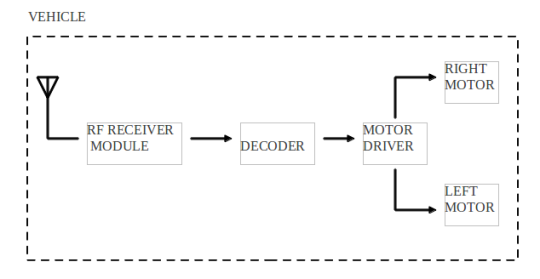

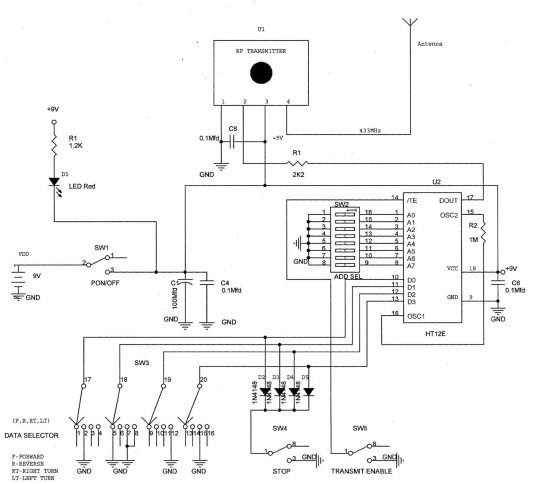
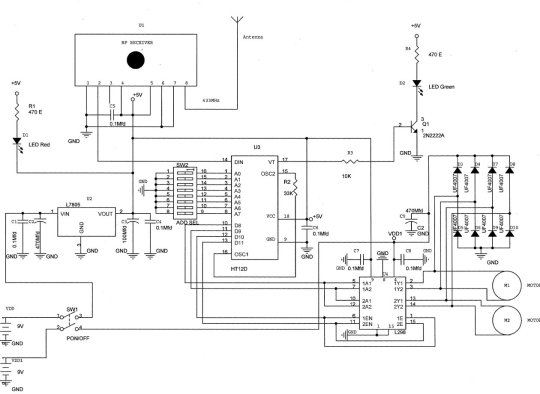
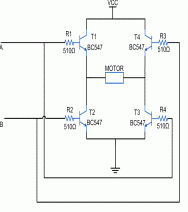
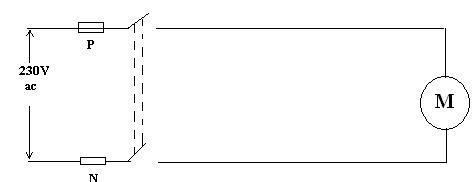
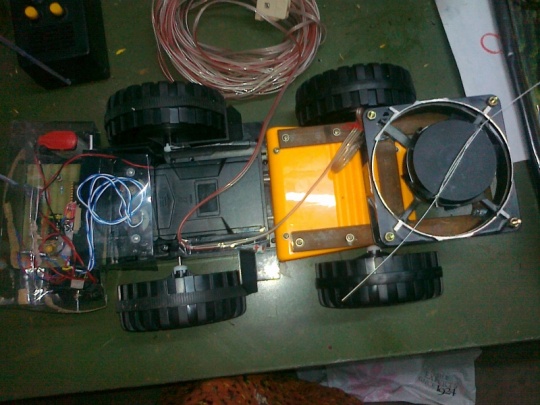

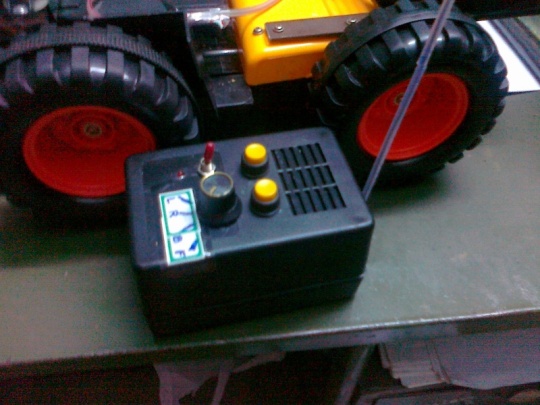







Tiada ulasan:
Catat Ulasan